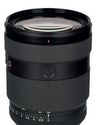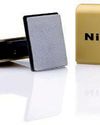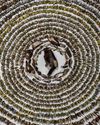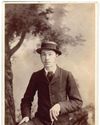
It was a sad day when Kodak pulled the plug on High-Speed Infrared film; it was one of my favourite emulsions. Not everyone liked its harsh unworldly effect, but I loved it for its high contrast, heavy grain, light-toned foliage and almost black skies. It was a film with very special qualities.
With the advent of digital came the ability to get cameras converted to infrared, so when I upgraded my Fujifilm X-T1 to the X-T2 I had the former IR converted.
The converted camera is a regular in my bag, usually fitted with the XF 14mm f/2.8 R lens. I have tried various lenses on the body but I prefer wideangles for this medium and this lens does not suffer from hotspots that many do. Flare is a potential hazard though, even when the sun is well off to one side.
Shooting cemeteries in infrared is not a new idea but this was the medium I chose for my project on London’s Magnificent Seven, the seven private cemeteries established outside central London after Parliament passed an Act in 1832. Highgate and Brompton are most widely known, and the others are Abney Park, Kensal Green, Nunhead, Tower Hamlets and West Norwood.
Spring is a great time for infrared when foliage is fresh and the lighting is not too harsh, so I was lucky to be able to spend time there. Most exposures were 1/60sec at f/8 in bright light with ISO 400 set and I shot handheld.
Infrared raws are flat and need work in editing to get decent results and noise needs adding for a realistic look, and I usually do this in Photoshop.
THE INFRARED LOOK IN PHOTOSHOP
Diese Geschichte stammt aus der November 29, 2022-Ausgabe von Amateur Photographer.
Starten Sie Ihre 7-tägige kostenlose Testversion von Magzter GOLD, um auf Tausende kuratierte Premium-Storys sowie über 8.000 Zeitschriften und Zeitungen zuzugreifen.
Bereits Abonnent ? Anmelden
Diese Geschichte stammt aus der November 29, 2022-Ausgabe von Amateur Photographer.
Starten Sie Ihre 7-tägige kostenlose Testversion von Magzter GOLD, um auf Tausende kuratierte Premium-Storys sowie über 8.000 Zeitschriften und Zeitungen zuzugreifen.
Bereits Abonnent? Anmelden

Calling The Shots: A Queer History of Photography
Offering an unprecedented view of photographic history through a queer lens, this is a wonderful and powerful book, says

Large-aperture standard zoom, too
SONY has also revealed a new premium standard zoom, the FE 28-70mm F2 GM.

Super-fast, high-res Sony Alpha Ai II
SONY has announced its new professional full-frame flagship camera, the Alpha A1 II.

39 awesome accessories
Our round-up of the best accessories we've used and reviewed this year, along with some old favourites. There's something here for every budget, starting from just £7, including tripods, bags, filters and much more

Such a thing as society
This autumn sees the launch of a major new book and exhibition devoted to examining the multiplicities of photography during 1980s Britain. Peter Dench finds out more

Join Club
The sociable Canvey Island Photographic Club is keen to grow its in-person meet ups

Capturing flight
Winners and finalists of Bird Photographer of the Year share their tips for success with Hollie Latham Hucker

140 years of change
AP has become the world’s oldest surviving consumer photo magazine because we have moved with the times, says Nigel Atherton

Preserving history in platinum
A deep dive into the meticulous art of platinum printing, and the collaboration between the Royal Geographical Society and Salto Ulbeek. Mike Crawford explores how they brought historical photographs to life with enduring beauty and precision

Life in the past lane
What was life like for an amateur photographer in 1884? John Wade takes a trip back in time